Matador Network's Blog, page 729
December 17, 2020
Holiday cocktails from around world

Festive cocktails can be one of the most memorable aspects of the holiday season. Welcoming your guests to your holiday party with a sparkling cranberry cocktail or a warm toddy garnished with a cinnamon stick sets the mood for the evening’s festivities, and could maybe even earn you a moment under the mistletoe. Holiday parties are on pause this year while most people practice safe social distancing, but holiday cocktails don’t have to be on pause. A new book called Very Merry Cocktails is full of ways to capture holiday cheer in a glass.
“I am always a fan of a signature cocktail. A lot of the flavors in these drinks are built off of nostalgic smells and tastes; cinnamon, vanilla, spruce (rosemary), cranberry, and others,” says Dena Rayess, a recipe developer on the book and food and lifestyle editor at Chronicle Books. “They evoke the sometimes intangible feeling of the holidays in a fun and celebratory way. Taking the time to make a big batch of drinks that fill the whole house with those flavors can really boost the mood.”

Photo: Ren Fuller
Very Merry Cocktails includes cocktails for every mood: There’s non alcoholic cider, a martini, hot drinks for cozier nights in, and Champagne cocktails when you’re feeling especially celebratory. It’s inclusive of all the different ways that people celebrate the holidays. And as an added bonus, many of the libations in the book include international ingredients pulled from places as wide ranging as Mexico, Belgium, and Sweden. So if you want to incorporate global elements of holiday celebrations (English wassailing or Scandinavian glögg parties, for example) into your pared down parties, a peek inside Very Merry Cocktails proves it’s easy to give your celebrations an international twist — even if you’re only hosting a few loved ones this year.
“[A signature holiday cocktail] is a low investment way to add an extra special layer to your day, which can be filled with a lot of cooking, cleaning, and corralling,” Rayess says.
In the spirit of filling your home with the holiday spirit, no matter where or how you celebrate, here are 7 festive cocktails with ingredients from around the world.
Glögg

Photo: Radu Gheorghita/Shutterstock
This Swedish take on mulled wine is an essential element of holiday celebrations in this Scandinavian country. Swedes hold so-called glögg parties throughout the Advent season, and enjoy the spiced beverage so much that it’s traditionally served in small glasses to prevent over indulgence. What makes glögg stand out is that blanched almonds and raisins serve as the garnish. Scandinavia’s caraway-flavored aquavit spikes this punch, adding to its earthy, spiced flavor.
What’s in it: 32 oz red wine, 32 oz aquavit, peel of 1 orange, 4 cloves, 2 cardamom pods, 8 sugar cubes, blanched whole almonds, and raisins for garnish (makes 10 to 12 drinks)
Snowball
This frothy cocktail is ideal for a New Year’s toast. The snowball’s citrus tang is balanced out by creamy Advocaat, a traditional Dutch alcoholic beverage similar to eggnog. Advocaat is a mixture of eggs, sugar, and brandy with the consistency of a thin custard. Sparkling lemonade adds a fizzy surprise.
What’s in it: 2 oz Advocaat, 2 oz sparkling lemonade, 1 oz lime juice, lemon twist for garnish
Irish coffee

Photo: Eduard Zhukov/Shutterstock
Though the drink is wildly popular in the US, Irish coffee actually originates in Ireland — it’s not the invention of entrepreneurial Irish-Americans. Joe Sheridan, a bartender working near an airport in Limerick, invented the drink in 1943 to warm up stranded travelers. Though the beverage has no special connection to Christmas or the holidays in general, it’s a brilliant choice for bringing back the warmth to your cheeks and fingertips on those frigid winter nights when the snow is falling outside your door.
What’s in it: 2 tsp demerara sugar, 1 ½ Irish whiskey, 6 to 8 oz hot coffee, whipped cream for topping
Velvet ribbon
This sparkling cocktail gets its fizz from Champagne and lambic beer, a fermented alcoholic legion that originated in the Pajottenland region of Belgium. Lambic beer is famously sour and funky; it’s fermented outside with wild yeast in open containers. Some lambics also tend to have a sweet, fruity flavor because certain versions of the beer are brewed with fruits like raspberries (look for framboise on the label) or peaches (pêche). This cocktail gets another hint of rich raspberry from Chamord, a raspberry liqueur produced in France’s Loire Valley.
What’s in it: 3 oz Champagne, 2 oz lambic beer, 1 oz Chambord or raspberry liqueur
Mexican hot chocolate

Photo: Guajillo studio/Shutterstock
This non-alcoholic drink has been around since at least 500 BCE, when Mayan people drank cacao beans ground up into a paste and mixed it with water and chili peppers. Today, Mexican hot chocolate is perhaps most well-known for its spicy flavor and thick texture. Discs of so-called Mexican hot chocolate — flavored with some combination of chilis, honey, and vanilla — are now widely available at grocery stores. The segments are meant to be chopped up and combined with hot milk until melted.
What’s in it: 8 oz whole milk, 2 wedges of Mexican hot chocolate, marshmallows and whipped cream for garnish optional
French kiss
The star of this cocktail is Lillet, a French aperitif that must be produced in Podensac to earn the name. It’s made with fortified and aromatized wine (similar to vermouth) using Bordeaux grapes and flavored with citrus liqueurs. The addition of Champagne to Lillet gives this easy cocktail a celebratory attitude, so even if you’re celebrating on your own this year you can still feel festive.
What’s in it: 1 oz Lillet, 4 oz Champagne, orange twist for garnish
Wassail
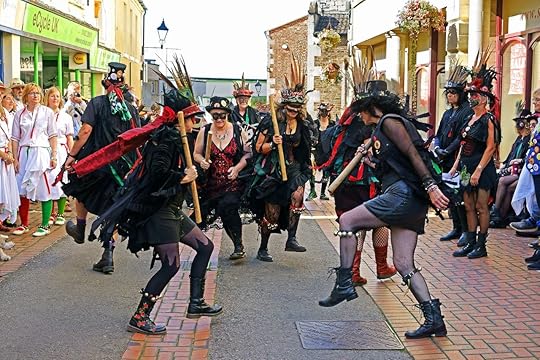
Photo: PJ photography/Shutterstock
Wassail refers to two different aspects of English culture: The first is the Wassail parade, an occasion for revelers to stomp through orchards in elaborate costumes to scare evil spirits out of the apple trees. The other is wassail the beverage, a hot mulled cider (or sometimes an ale) mixed with honey and spices. Wassailing parties and parades happen throughout the holiday season in the United Kingdom and even in the apple growing regions of northeastern New York. The parties usually involve a big bonfire and the banging of pots and pans near the trees, a ritual that harkens back to a time when such celebrations were meant to encourage a bountiful apple harvest the following autumn.
What’s in it: 1 cinnamon stick, 1 clove, 6 whole allspice berries, 48 oz apple cider, 16 oz cranberry juice, ¾ oz simple syrup, 4 oz Calvados, 4 oz barandy, 1 Pippin or Granny Smith apple (cored and sliced) for garnish (makes 8 drinks) 
More like thisSpirits + Cocktails7 creamy and boozy eggnogs made around the world
The post 7 festive holiday cocktails from around the world appeared first on Matador Network.

Best cities for Christmas 2020

This year, the definition of “the best Christmas city” is somewhat different than usual. It’s not the city with the best window displays or holiday parties. In a season of social distancing, Christmas is all about safety, sticking to admiring your own Christmas tree, and of course, drinking. WalletHub just released its report of 2020’s Best Places for Christmas Celebrations, and the cities on the list reflect the unique Christmas season in which we find ourselves.
To compile the list, WalletHub compared the 100 biggest US cities based on 15 key indicators of a safe and affordable Christmas. Among these criteria are safety, traditions and food, observance, and generosity, and subcategories including number of COVID-19 cases, number of Christmas tree farms, meal prices, churches per capita, food banks per capita, and share of income donated to charity.
According to the list, Durham, NC, is the best city for Christmas this year, followed by San Jose, Honolulu, Oakland, Raleigh, Pittsburgh, and San Francisco. Perhaps surprisingly, warm-weather cities dominate the list, showing that “having a white Christmas” wasn’t one of the criteria.
Among the findings, Miami has the most Christmas tree farms per square root of the population, Honolulu has the fewest COVID-19 cases, Orlando has the most bakeries, Seattle has the most food banks, and some would say most importantly, Indianapolis has the lowest average price of wine.
The top 10 cities and their corresponding data are pictured below. The full list of cities is available on WalletHub. 
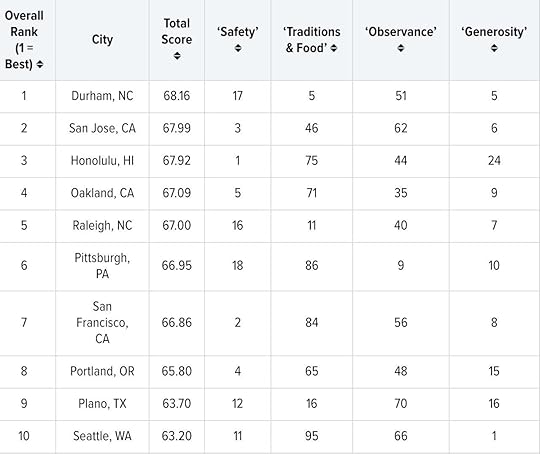
Photo: WalletHub
More like thisFestivals12 places around the world that go all out with holiday lights
The post The best cities for Christmas in 2020, according to science appeared first on Matador Network.

December 16, 2020
Best ski resorts for snowboarders
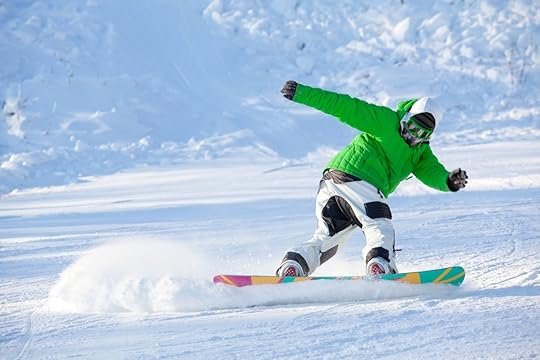
We know that not all ski resorts are created alike. What may be less clear is that some ski resorts are much better for snowboarders than others. It’s not just about the terrain parks since not all shredders — that is, snowboarders — even want to do tricks. Rather, the mountain topography, the quality of snow, and of course the vibe all factor into what makes a good mountain a great one for shredding. We asked some pioneering snowboarders for their take on the best North American ski resorts for snowboarders.
What to consider when choosing a resort to snowboard
The most obvious question is if a mountain will even welcome snowboarders. Luckily, only three resorts are still holding out: Vermont’s Mad River Glen, Deer Valley, and Alta. Although Deer Valley and Alta are both in Utah, the state still has great options for boarders, which we’ll get to below. Beyond those three, snowboarders are welcome at resorts throughout the country.
A more subtle consideration is whether a mountain has many flat areas that are easy for skiers to traverse, by skate-skiing or using their poles, but that are a hassle for snowboarders. For example, British Columbia’s Blackcomb Mountain, which opened over 20 years after its neighbor Whistler Mountain, designed its pistes with fewer flat run-outs and cat-tracks. While both mountains are today part of one resort called Whistler Blackcomb, it’s no surprise that the majority of the terrain parks are on Blackcomb.
Terrain parks are an important draw for snowboarders who are out to get air or ride rails. Most ski areas have at least one, and many larger resorts feature multiple parks catering to different ability levels. Other riders care more about snow quality since many snowboarders would prefer even heavy snow over a groomed slope — that is, over a slope that’s been smoothed out by a snowcat. And the vibe matters. Deer Valley prohibits snowboarders because it caters to older skiers who don’t want to be taken out by a crazy young shredder screaming down a run. Then again, most younger snowboarders probably aren’t looking to have lunch in an elegant lodge playing Vivaldi’s “Four Seasons,” either.
All that being said, a lot of it comes down to what you make it.
“What makes a mountain great for snowboarding is simply having snow!” says snowboarder Austin Hironaka, a well-known shredder in his native Washington state who’s big in Japan too. “I’ve been able to enjoy snowboarding from hiking up a little hill to catch some air or hit a rail, riding chair lifts on resorts, to ripping huge lines right out of a helicopter.”
1. Park City, Utah
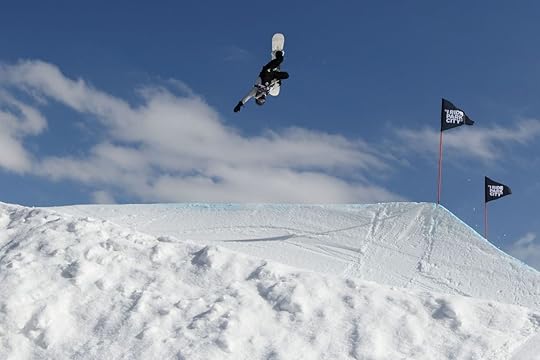
Photo: Park City Mountain/Facebook
While Utah’s Deer Valley and Alta may not welcome snowboarders, Park City resort most certainly does. In fact, it’s one of the training grounds for US Ski and Snowboard team members, some of whom will travel to China for its 2022 Winter Olympic Games. One person hoping to get to the Olympics is Brolin Mawejje, star of the snowboard film “Far From Home.” Mawejje currently resides in Park City where he’s earning a master’s in public health while also training hard to represent his native Uganda at the 2022 Winter Games.
View this post on InstagramA post shared by Brolin (@thabyron_ma)
Mawejje told me that Park City is his choice for its terrain parks. In fact, of the resort’s eight terrain parks, the 22-foot Eagle Superpipe has already seen its fair share of the highest international competitions: from the 2002 Salt Lake City Winter Olympics to several Olympic qualifying events. The resort’s 3 Kings area, which along with Pick n Shovel and the Eagle Superpipe is part of the Triple Park Zone, offers everything from jumps to rails and half-pipes for different abilities.
2. Jackson Hole, Wyoming
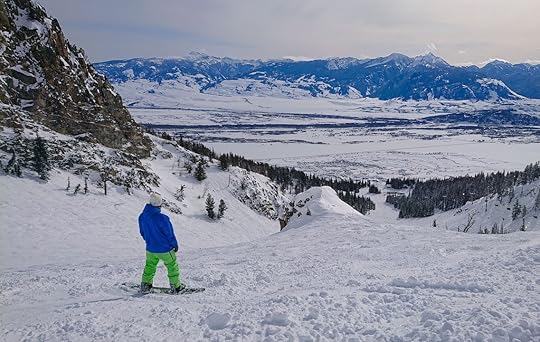
Photo: Flystock/Shutterstock
Snowboarder Emilè Zynobia is an ambassador for Jackson Hole Mountain Resort, in addition to being a writer and master’s student at the Yale School of Environmental Sciences. For Zynobia, Jackson Hole is one of the top two US resorts for snowboarders, a sentiment that Mawejje also agrees with. Jackson Hole’s “amazing terrain and consistent epic snowfall” set it apart, according to Zynobia.
The “amazing terrain” includes 2,500 acres of inbound area and a vertical drop of over 4,100 feet. Moreover, 90 percent of Jackson’s runs are for intermediate and expert skiers. And we do mean expert. Jackson’s Corbet’s Couloir, a narrow, steep, rock-flanked chute you might have to jump 20 feet just to get into, is one of the most notorious runs in North America.
View this post on InstagramA post shared by emilé zynobia (@curlsinthewild)
“Many of the world’s best snowboarders like Travis Rice, Bryan Iguchi, and Blake Paul call this place home,” Zynobia tells me via email. “And many other pros like Ben Ferguson, Hailey Langland, and Red Gerard come here to film. [It offers] the best terrain for the aggressive and advanced rider, and if you are neither this mountain will make you one.”
3. Mount Baker, Washington
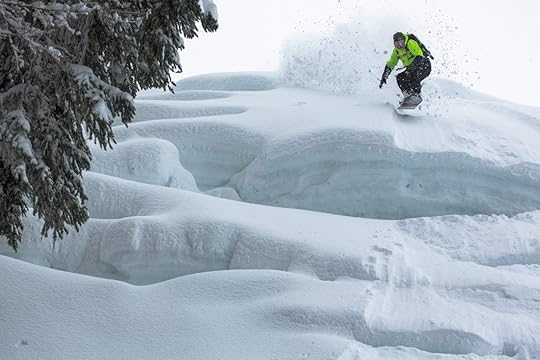
Photo: Mt. Baker Ski Area/Facebook
Zynobia’s other big pick for the best snowboarding mountain in the US is Mt. Baker in northern Washington state. She calls the resort the “origin of snowboarding culture. One of the few resorts where snowboarders outnumber the skiers on any given day.”
That’s no big secret. For Park City’s Mawejje, Mt. Baker is third in his three top picks, alongside Park City and Jackson. I’ll even confess that as a former college ski racer, I spent a long weekend in Mt. Baker several years ago specifically to learn to snowboard. With its tendency to have gobs of fresh snow all winter — which in addition to being fun to shred on is also forgiven for a first-time snowboarder falling a lot — it was definitely the best place to take up the sport.
In fact, Mt. Baker gets over 640 inches of snowfall a year. No other North American mountain comes even close. (Alyeska in Alaska gets a lot of snow, but only at the peak). Mt. Baker leaves much of that snow blissfully ungroomed, which is just what snowboarders love.
That ungroomed, less polished approach fits in well with the Mt. Baker vibe, which Zynobia says is, “one of the few resorts holding onto and honoring its mom and pop grunge roots.”
4. Alpental, Washington
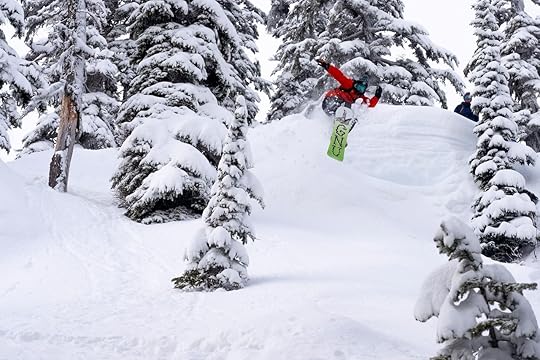
Photo: Alpental/Facebook
Although he lives in Washington State, Hironaka’s preferred in-state ski resort is Alpental, just 40 minutes outside of Seattle. Hironaka started skiing there at age three and snowboarding there at age eight. His reasons for appreciating Alpental are similar to why others love Mt. Baker.
“What ruins a mountain for snowboarders is when skiers have this elitist mentality like the owners did at Crystal Mountain and Deer Valley. We’re all up there tryin’ to do the same thing, play in the snow and enjoy the mountains,” he says.
Alpental is anything but elitist. It’s truly a locals’ mountain, somehow “very simple, yet insanely complex” with its four lifts accessing “some of the best steep and deep terrain in Washington.” Having experienced the many options of chutes and runs there myself, which can be mixed and matched like a jigsaw, I can attest to the variety of runs Alpental’s 300 inbound skiable acres, along with 500 backcountry acres, can offer.
5. Revelstoke, British Columbia
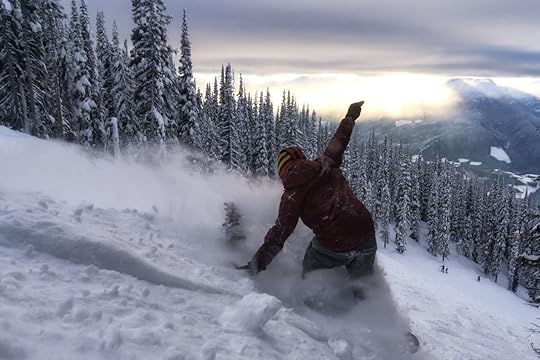
Photo: EB Adventure Photography/Shutterstock
Hironaka’s other favorite North American resort is Revelstoke in British Columbia, the most intense of the resorts along Eastern BC’s Powder Highway. In fact, Revelstoke boasts the longest vertical descent in North America and unbelievable amounts of snow year over year.
View this post on InstagramA post shared by Austin Hironaka (@hironakasan)
The place, says Hironaka, is simply “bonkers!” As Hironaka says, “It too only has four lifts but the places those lifts can take you will blow your mind! Endless options, pow for days, huge cliffs and lines, epic trees, it’s got it all!”
And out in Eastern BC, Revelstoke holds onto that slightly gritty mountain vibe, one that keeps a place real — and keeps the snowboarders coming back. 
More like thisWinter SportsThe best ski resorts in North America for beginners
The post The best ski resorts for snowboarders, according to pro shredders appeared first on Matador Network.

New museums that are opening in 2021

For those seeking cultural experiences in their 2021 travels, you’ll be elated to know that some of the most long-awaited and celebrated curatorial institutions will finally be opening their doors next year. Though for some the goal of a 2021 open was planned from inception, many of these facilities were directly impacted by the COVID-19 pandemic, halting construction efforts, installations, and projects for several months.
But despite all the delays and complications, we’re getting some incredible contributions to our collective heritage around the world. You may already have some of these on your radar, but in case you didn’t hear the news, here are some of the most important museums opening in 2021. Whether you’re into design, fine art, or digital media, you’re bound to find something new for your bucket list.
1. Pudong Museum of Art, Shanghai, China

Photo: Jean Nouvel
A part of China’s state-run, many-years-long plan for the revivification of arts and culture in the nation, The Pudong Museum of Art will serve as the arm that intends to display international fine art in concert with its collaborations with other storied institutions around the world. Situated on a prime plot of land, immediately adjacent to the Yangtze and next to the iconic Oriental Pearl Tower, the new museum will anchor the East Bund riverside Arts and Culture District in Shanghai’s “new” Pudong.
Designed by Jean Nouvel, who is known for his work on the Louvre in Abu Dhabi and the National Museum of Qatar in Doha, the new museum is a six-story building with over 400,000 square feet of exhibition space. Entire sections of the walls facing the river are composed of glass, so the interior of the building will be visible from the Bund riverwalk on the other side.
The most auspicious partnership yet brokered for the new museum is with Britain’s legendary Tate institution. They are slated to provide the first international exhibition after the museum’s completion and offer guidance for education programs and exhibition curation utilizing their considerable experience overseeing four museums in the UK.
2. Academy Museum of Motion Pictures, Los Angeles, CA

Photo: Academy Museum of Motion Pictures/Facebook
The brainchild of the Academy of Motion Picture Arts and Sciences — the organization that produces the Oscars — the Academy Museum of Motion Pictures was first announced back in 2012. It will be the first large-scale institution of its kind in the United States, housing objects and media exploring the business, history, and craft of film. Though certainly its location would dictate a focus on Hollywood productions, their mission statement assures that it will serve to highlight the contributions film has made to our collective culture from around the world.
Internal issues with staff up to and including a highly publicized sex scandal, issues with meeting codes, and securing permits have pushed back the opening several times since the original date was set for 2017. The delays were so numerous that in 2019, Vanity Fair contributor Laura Bradley mused just after the delay to 2020 was announced, “Are we absolutely positive that the Academy Museum is not, in fact, some kind of hoax?” Though a “final” opening date was secured for December 2020, as announced by Tom Hanks at the 92nd Academy Awards, complications arose from the pandemic that pushed the opening again.
As of right now, it appears that the museum will be “finally” opening April 30, 2021, under the creative direction of newly appointed Bill Kramer. The date was picked to coincide with the similarly delayed 93rd Academy Awards. Some items in their permanent collection include the typewriter Alfred Hitchcock used to write Psycho, the Aries 1B model from 2001: A Space Odyssey, and “Bruce,” a replica of the animatronic shark used in Jaws.
3. M+, Hong Kong

Photo: M+/Facebook
Billed as a museum of visual culture, M+ aims to be much more than simply a contemporary art museum. It describes its mission as being “dedicated to collecting, exhibiting, and interpreting visual culture of the 20th and 21st centuries” and intends to supplement its physical collection with exhibitions, screenings, workshops, and panels.
When the physical space is completed, it will be the keystone in the wider West Kowloon Cultural District development project, which seeks to turn this reclaimed Hong Kong neighborhood into a hub for arts and culture. While the museum, as a concept, has been around since 2016, operating out of the M+ Pavilion, when its main site opens in 2021, the majority of the programs currently running will move to the new site while the pavilion will remain an exhibition and performance space.
If you can’t make it to Hong Kong, or simply don’t want to wait for it to open, the museum’s creative direction has already put a considerable amount of its offerings online. You can view and peruse collections, attend online events, and even participate in workshops from anywhere in the world.
4. Munchmuseet, Oslo, Norway

Photo: designium/Shutterstock
In a not un-fraught decision, the new site for the much anticipated new iteration of the Munchmuseet was finally chosen because its position would render it visible from many parts of Oslo. Nearly completed adjacent to the Bjørvika Bay and quickly approaching its opening date, the new tower is in Oslo to stay though the design has infamously divided the populace between devotion and derision.
Juan Herreros, one of the architects responsible for the buildings’ design and execution, said, as if he was the building itself speaking, “I hold the legacy of the most important artist in Norway’s history, and I gaze entranced at Oslo and the fjord because it is the city and its collective dreams that have built me.” It is a poetic and lofty ideal to uphold with a single building, but its ingenious design of reflective walls that mirror the changing vistas of the bay, and its slanting, seemingly impossible apex that will forever change Oslo’s skyline come extraordinarily close.
Though the Munchmuseet has technically already existed since the institution was first inaugurated in 1963, the former building was never up to the standard that the late artist himself stipulated in his will. Additional challenges relating to administrative space and security have long pressed a new venue, especially after the theft of Munch’s two most important works, “The Scream,” and “Madonna,” in 2004. Though they were eventually recovered after an over two-year-long manhunt, this new outlet will be the first of its kind that both correctly — and safely — houses the treasured legacy of the late artist.
Also unlike the former venue in Tøyen, the new Munchmuseet is so large it will house rotating exhibitions of domestic and international artists that compliment Munch’s work. This will not only provide a more valuable experience for visitors but in a practical sense of curatorial practice, it will serve to place the work of Edvard Munch within a visually contextual framework that will showcase his place within the canon of 20th-century art.
5. Museum of North Vancouver (MONOVA), North Vancouver, Canada

Photo: Museum and Archives of North Vancouver/Facebook
The small community of North Vancouver, a municipality independent of the city of Vancouver, in British Columbia, has long needed a space for its own community to tell its stories and preserve its own unique history. Known as the NVMA, or North Vancouver Museum & Archives in its former iteration, the new space in the historic Shipyards District is where it will formally utilize the name Museum of North Vancouver, or MONOVA going forward, and rebranding itself as a full-fledged museum with a focus on community engagement and creating equitable access to its extensive archives.
The museum has a remarkable and comprehensive plan for growth beginning in 2020, with a huge focus on diversity, inclusion, and preserving the cultural currency of the region. It aims to position itself as a hub for arts and culture in North Vancouver, spearheading events, programs, and community initiatives. It values its position as a steward and archivist of physical cultural artifacts from the community and has invested heavily into creating facilities that will maintain these pieces meticulously. And in lockstep with other progressive Canadian organizations, it dictates that among its guiding principles is “Maintaining strong links with local First Nations,” and promises to “[respond] to the ‘calls to action’ made by the Truth and Reconciliation Commission.”
The culmination of a 48-year history of carefully archiving objects and stories from North Vancouver, this museum aims to be the linchpin in a community reckoning of the divide between settler Canadians and Indigenous people. The new space and direction afford it the opportunity to reconcile its complicity in the subjugation of Indigenous communities and offer more comprehensive offerings going forward.
6. Avicii Experience, Stockholm, Sweden

Photo: Avicii Experience
The Avicii Experience will become the touchstone for lovers, fans, and practical students of the late, beloved EDM musician Tim Bergling, otherwise known by his stage name, Avicii. While billed as an “emotional tribute” to his life and work, it will also have many offerings surrounding the larger culture of electronic music.
Operated by Pophouse Entertainment Group, the same folks responsible for the ABBA museum on Djurgården island, the new museum will be a part of the SPACE complex, an upcoming venture that aims to be a center for digital culture in Sweden featuring facilities for gaming, content creation, and other digital media.
The Avicii Experience will feature memorabilia, unseen photographs, and unreleased music from the late artist, promising an immersive experience that chronicles his journey to become one of the worlds’ most renowned musicians. A portion of the proceeds from the Avicii Experience will go to the Tim Bergling foundation, an organization dedicated to our collective responsibility to declare suicide a global health emergency. The foundation also supports causes that were championed by Bergling during his lifetime, like those that support climate change research, combat global hunger, and toward the protection of endangered species.
7. Grand Egyptian Museum, Giza, Egypt

Photo: Grand Egyptian Museum/Facebook
Though construction officially began back in 2002 when then-President Hosni Mubarek himself laid the first stone into the site on the Giza plateau, its completion has been plagued by delays due to construction, revolution, and lack of funds since it was first conceived of back in 1992. But after one seemingly final delay stemming from the COVID-19 pandemic, the opening date was pushed from the last quarter of 2020 to 2021.
When it opens it will be the single largest museum in the world that is focused on a single civilization, and at a total cost of nearly $1 billion, it will be one of the most expensive archival institutions ever created. The buildings’ design was decided with a worldwide competition that garnered over 1,500 entries and took a year to judge, but the winning design was chosen from the Irish firm Heneghan Peng Architects, which received $250,000 for its efforts.
Maybe the most long-awaited facility on this list, it was originally projected to open in 2013. But in 2011, the Egyptian Revolution halted meaningful progress for several years. By 2015, the Minister of Antiquities announced an opening date of 2018, but a fire pushed back progress further, and a new timeline secured around a 2020 opening seemed extremely certain. So certain that the new, supposedly final opening date in 2021 wasn’t set until April when we were already well into the brunt of the pandemic.
But when it does finally open its doors — presumably in June 2021 — it will be an unprecedented achievement in architecture, archival sciences, and multimedia programming, and it will take its place as the unequivocally largest archeological museum in the world. The museum plan will also house a 3D theater and several restaurants. It will hold over 50,000 Egyptian artifacts, 5,000 from the tomb of Tutankhamen alone. It is expected to attract five million visitors annually. 
More like thisMuseumsThe best holiday gifts from the world’s greatest museum gift shops
The post Long-awaited museums from around the world that are finally opening in 2021 appeared first on Matador Network.

Sea foam washed up in Australia

It looks like something out of an otherworldly apocalyptic movie, but in reality, it’s just a little sea foam. To be fair, it’s more like an onslaught of sea foam whipped up by intense storms this week that’s covering the beaches of New South Wales and Queensland, Australia. While you might be tempted to flop right into it like diving into fluffy snow, you should probably think twice because sea snakes and other materials are lurking under the soft surface.
Although people are certainly enjoying the foam — both playing in it and taking photos of it — it’s being advised to steer clear due to the presence of sea snakes, which could have gotten swept up in the foam. There are 32 species of poisonous sea snakes around Australia, and their bites require antivenom.
The stormy waters are also bringing large debris to the shore, says Nathan Fife, the Gold Coast lifesaving services supervisor at Surf Lifesaving Australia, to Guardian Australia. “There’s been trees and things like that have washed up. I think there was half a cow that washed up at the beach yesterday, so make sure what’s in front of you — there are trees and logs floating around, so please be careful.”
The foam is formed by the churning of seawater with algae, salts, fats, and other pollutants, and it’s so thick that a dog was even lost (and later found) in the foam this week at Snapper Rocks on the Gold Coast.
Hazel the dog rescued from sea foam in Byron Bay, Australia. Sea foam often forms when strong winds and large waves whip up the cresting waves. pic.twitter.com/KSmREu2ADs
— BBC Weather (@bbcweather) December 14, 2020
People are also encouraged to be careful of surges of water under the foam, which aren’t visible but could cause you to fall and be dragged out to sea. 
More like thisNewsThis stunning silo street art is putting rural Australia on the map
The post Western Australia covered under huge amounts of snake-infested sea foam appeared first on Matador Network.

Who needs a visa to travel to Oman

Before COVID-19, “travel restrictions” referred mostly to visa requirements, which prohibited or complicated entry to certain countries. Many of those requirements are still in place today, even for US citizens who have a relatively strong passport. Oman, however, has just made it much easier to visit, lifting tourist visa requirements for visitors from 103 countries, including the US, UK, 41 European countries, Australia, and New Zealand.
All tourists previously had to apply for a visa online before visiting Oman at a cost of $14 for 10 days and $52 for 30 days. Now, travelers are allowed to stay visa-free for 10 days as long as they have a hotel reservation, health insurance, and a return ticket leaving the country.
There are still several COVID-19 requirements to keep in mind before you visit. Incoming tourists to Oman must complete an online pre-registration form and take a PCR test upon arrival at their own expense (around $65). They must also download a contact tracing app, self-isolate for a week, and take a second PCR test after that week is over. They must also have health insurance covering at least 30 days of COVID-19 treatment. 
More like thisCulture9 reasons you should consider visiting Muscat, Oman, instead of Dubai
The post Oman is lifting its visa requirements for travelers from 103 countries appeared first on Matador Network.

How to work abroad

There’s never been a better time to work abroad. That much is clear from the digital nomad visas that keep popping up, as well as the incentives that destinations are offering to remote workers in places like Arkansas, Iceland, Dubai, and everywhere in between.
While remote work — both domestic and abroad — was on the horizon for many whose work revolves around computers rather than services, the pandemic has quickened the pace. Zoom has become a mainstream work tool, and the thought of getting 100 percent dressed for the day has faded into memory. Finding ways to be productive from home, or wherever home is for the time being, has never been easier.
When it comes to those who can work from home and companies that can continue to operate with a remote workforce, “everyone across the board is winning,” says Moe Vela, a remote work expert and the chief transparency officer of the employee management company TransparentBusiness. “It’s not sensationalism, I think it’s the new normal. I’ve been predicting for seven months now that it’s here to stay as employers are seeing that remote works, and that they have more productive and happier employees. They would be fools to take it away.”
Vela cites a number of factors: The average employer is saving $11,000 per employee, he says, and absenteeism is down. Workers no longer have to lose hours of their day to commutes. The environment benefits from cutting out unnecessary daily drives. The list goes on.
Yet Vela is quick to add that the benefits of a remote workforce have not fallen evenly. Parents who are suddenly tasked with working from home while also teaching their kids are losing out, for example, as are commercial real estate businesses and restaurants that relied on office buildings as a gathering point. Still, there are millions who are able to take advantage of the expanded remote work environment, and many more millions who have the potential to in the future.
“I have gone as far as to predict that an employer of the future who does not offer a remote workforce option in their employee benefit package will be less competitive and will lose out on the most talented people around the world,” Vela says. “I believe it will absolutely be a part of an employee benefit package just like health insurance, just like paid time off, just like sick leave.”
In the not-so-distant future, it’s not inconceivable that working remote domestically isn’t all that different than working remote abroad, Vela says. For many, this is a dream.
We’ll have to wait until traveling is entirely safe, but for people who’ve long wanted to venture out and work in another country for a spell, now is the time to start planning. Here’s what the experts suggest you do before deciding to take the leap and work abroad.
First order of business to work abroad: a work visa
Cepee Tabibian, an American living in Spain and the founder of the women’s travel company She Hit Refresh, found that there are common misconceptions about getting work abroad. When writing her book I’m Outta Here! An American’s Ultimate Visa Guide to Living in Europe, she found the biggest misconception was that finding a job abroad would be easy.
“If you are a foreigner looking to get hired abroad, there is one step that people often overlook: the need for a work visa,” Tabibian says. “While you may be qualified for a position based on your experience and skills, most employers abroad are required to do a market test to ensure there is no local talent who can fill the position. Hiring a foreigner can be an expensive and lengthy process for an employer which means most are not open to the process of sponsoring work visas.”
Without a work visa, there is no working abroad. Tabibian says the European countries that are easier for freelancers and self-employed people to get a visa include The Netherlands, Germany, and France. Spain and the Czech Republic offer long-term English teacher stays, while digital nomad visas in Estonia, Georgia, and Croatia (soon) make those countries easier for remote workers who already have a job.
Don’t forget about your own cultural fit abroad
Work isn’t the only thing to keep in mind. Fitting in with the culture is also important, says Priya Jindal, the founder of Nextpat who has worked abroad as a fellow with Indicorps and has worked in Africa and Asia for the US government.
“While some people may mean finding a culture that is akin to your own and working there, culture fit is really about a mindset,” Jindal says. “It’s about learning how a culture deals with conflict, how it communicates, and how that shows up in your workplace.”
The right cultural fit can make or break your experience working abroad.
“One thing to figure out is if you have some perspectives or ways of being that will not work in another society and you are unwilling to adapt those to find harmony in a new place,” Jindal says. “If this is the case, then you would want to seek out cultures that appreciate those behaviors and pursue work in those places. So, for example, if individual credit and recognition is very important to you and it’s hard for you to cede credit or even recognize a team above yourself you may want to find work in a more individualistic instead of collective society. If you’d like to pursue that as a goal – growing into someone who can do both – you may find a culture that addresses both and seek to start growing to adapt to a more collectivist culture.”
Jindal suggests taking an assessment like Philipe Rosinski’s Cultural Orientations Framework to find your cultural disposition. Overall, every company is different and it’s on the person moving abroad to make sure they can adapt.
Do your research on available Wi-Fi
It’s difficult to be a digital nomad if you can’t get online. Tools like the website WiFi Map can help you find trustworthy and safe places to connect. Some of the most important things to remember is to avoid working with private or sensitive information when using publicly available internet. Only use HTTPS sites, and when possible, use a virtual private network (VPN) connection.
According to data for WiFi Map, the top cities for free Wi-Fi hotspots are Singapore, Seoul, Moscow, New York, London, and Tokyo. Germany has some of the most secure public Wi-Fi among Western European countries with nearly 85 percent of access points protected by WPA or WPA2 encryption. WiFi Map also notes that at least 63 percent of connections are secure in 12 countries: Japan, Canada, Argentina, Peru, Spain, Sweden, Kazakhstan, Saudi Arabia, Iran, India, Australia, and Poland.
And then there’s the question of speed. WiFi Map’s data found the fastest internet speeds in the following countries: Luxembourg, Singapore, Mongolia, Bulgaria, Mauritius, Macedonia, Bangladesh, Latvia, and Finland.
Americans don’t have to move from the US to work abroad in a new country

Photo: fizkes/Shutterstock
Once you decide you want to work abroad, you’re not limited to picking one place and sticking with it. Alex Davis, the co-creator of the fitness and nutrition site Ryan and Alex Duo Life, has lived and worked in seven countries — Ecuador, Argentina, Peru, Colombia, Panama, Costa Rica, and Mexico — in the past three years.
“While there are some clear similarities — mainly that they are all Spanish-speaking countries — we still had to ‘start over’ whenever we moved,” Davis says. “But with each move, we honed in on our process of finding a rental property, choosing a cell phone plan, upgrading the internet, learning how to pay the bills, and finding a community and network.”
Davis adds that it gets easier with experience once you’re familiar with what you need to look for. The internet speed is one of the most important for digital nomads to pay attention to. Even countries with fast Wi-Fi speeds can have gaps in rural areas. In their experience, Medellin, Colombia, was the easiest place to work abroad thanks to a high quality of life, fast internet, and an accessible international airport. Shanghai and Playa Coronado, Panama, were on the easier side as well. More remote towns in Argentina and Costa Rica proved to be harder to adjust to, however, due to accessibility and internet speeds.
You have to pay taxes in the US even when abroad
“Really the thing that makes taxes a hassle abroad is the American taxes,” says Grace Baldwin, a freelance copywriter who’s lived in the Netherlands for almost four years. “The US is one of the few countries in the world that actually taxes citizens who live abroad. So my earned income in the Netherlands counts as taxable income in the US. The Netherlands has a treaty with the US that eliminates double taxation up until a certain pay level, but after you pass a threshold you have to pay double taxes.”
As with pretty much everything else in the US tax system, giving the government your money is more complicated than it needs to be — even when you don’t live there. The rules are guided by the 2010 Foreign Account Tax Compliance Act, and a careful reading of the IRS site should be on the checklist of anyone who wants to work abroad.
“Get your financial house in order before you move abroad,” Baldwin says. “You’ll want to consult with wealth management companies who know the ins and outs of international financial law. You’ll also want to find a great tax specialist in the country you move to. I found my accountant through the Americans in the Netherlands Facebook group and am so thankful.”
Opt for a tax specialist
Finding a bank that makes life easier for expats is an important step to take. HSBC, for example, has many dedicated resources for expats, including tax guides, wealth insights, online banking capabilities, and a fraud and security help center. The bank’s Expat Explorer Survey is also a great resource for people who are weighing different countries by values, money, and lifestyle.
Kristin Addis of Be My Travel Muse has worked in Germany as a freelancer for four and a half years. Due to the many tax hoops to jump through on her freelance visa, she invested in professional help — something that’s expensive, but worth it.
“I spent a lot on accountants in Germany and the US because as a freelancer your taxes are going to be more complicated and it’s not worth the headache of dealing with it in a country with complicated tax rules,” Addis says.
The consequences of not filing the proper taxes can follow you even after you’ve moved back home.
“When working abroad, you’ll still need to file your taxes with the US IRS,” George Birrell, a CPA and founder of TaxHub, says. “Many people seem to not realize this and they end up paying for it later. When you work abroad, you’ll likely only have to pay tax for the location that you’re working in depending on what your income is. However, if you don’t file with the IRS, they won’t know that you paid tax for the income earned in that location. You’ll therefore end up being taxed by the US IRS in addition to the taxes you paid to the other country.” 
More like thisExpat LifeThe 15 best digital nomad visas from around the world
The post Essential tips to know before working abroad, according to experts appeared first on Matador Network.

Man rides jet ski from Scotland

Lockdowns are keeping loved ones apart, and some are taking being separated a lot better than others. Dale McLaughlan, from North Ayrshire, Scotland, has been jailed for jet skiing from a peninsula in Scotland to the Isle of Man to see his girlfriend. It wasn’t the jetskiing itself that was the problem, but breaking the COVID-19 rule of entering the Isle of Man without special permission. The rule was put in place to protect the island’s residents from exposure to COVID-19.
Perhaps most impressive, the four-and-a-half-hour journey was the first he’d ever made by jet ski, having never ridden one before. Reportedly, he thought the trip would only take 40 minutes since one can see the Isle of Man from the peninsula where McLaughlan started.

Photo: Google Maps
Upon arriving at the northern town of Ramsey, he walked 15 miles to the capital of Douglas, where his girlfriend lives, and the pair attended two busy nightclubs before being caught during identification checks.
According to his defense lawyer, McLaughlan suffered from depression and was struggling to cope in the absence of his girlfriend. That defense didn’t get him out of trouble, though. Deputy high bailiff Christopher Arrowsmith said his actions were a “deliberate and intentional attempt to circumnavigate” island restrictions, and he was sentenced to four weeks in jail. Love does not always prevail, apparently. 
More like thisSocial Distancing
The post A man is jailed after riding jet ski from Scotland to the Isle of Man to see his girlfriend appeared first on Matador Network.

Livestream of the winter solstice

By now, we’re all used to our favorite events being canceled this year. Luckily the winter solstice is cancel-proof. While your options for celebrating the shortest day of the year might have narrowed, that doesn’t mean you can’t still ring in the promise of more daylight in epic fashion.
Stonehenge, the prehistoric site, hosts one of the most popular summer solstice celebrations in the world. The June event usually attracts thousands of people, including the druid and pagan communities, to watch the sun rise behind the Heel Stone. But the ancient people who built Stonhenge also used to make a big deal about the winter solstice.
When the monument was still standing in its entirety the sun used to set exactly in between two standing stones. Today, you can’t see the phenomenon happen, but many usually gather to honor the ancient celebration and mark the shortest day and longest night of the year.
Since people aren’t allowed to visit Stonehenge this year due to the COVID-19 pandemic, the event will be livestreamed on the English Heritage’s social media accounts on the evening of December 20 and the morning of December 21 (sunset is at 4:01 PM local time, while sunrise is at 8:09 AM).
According to a statement by English Heritage, “Owing to the pandemic, and in the interests of public health, there will be no Winter Solstice gathering at Stonehenge this year. The Winter Solstice sunrise will instead be live-streamed from the stones on the morning of the 21 December. It will be easy and free to watch on the English Heritage social media channels. We know how appealing it is to come to Stonehenge for the Winter Solstice but we are asking everyone to stay safe and to watch the sunrise online instead. We look forward to welcoming people back for solstice next year.” 
More like thisCultureForget Stonehenge and head to Salisbury, the best medieval city in the UK
The post Stonehenge will livestream its winter solstice celebration appeared first on Matador Network.

Expedia expects 2021 demand

It’s no secret that the travel itch is growing more intense every day people are stuck in their homes, but there’s some good news on the horizon for the frustrated travelers and the beleaguered travel industry. According to Travel Pulse, a senior executive at Expedia is predicting a massive surge in travel for the second quarter of 2021 thanks to the vaccines currently rolling out across the United States and other countries.
During a panel discussion for the Explore ‘20 Expedia virtual conference, Cyril Ranque, president of Expeidia’s Travel Partners Group, said he expects a “big, big exponential jump in demand” in the second quarter.
Monya Mandich, vice president of Expedia’s global marketing, agrees with Ranque’s assessment. “As the world keeps a watchful eye on vaccine news, and people continue to crave a change of scenery or opportunity to catch up with loved ones, we know the pent-up demand for travel will grow,” she said. “COVID-19 has driven a seismic shift in traveller preferences and influences, and understanding these changes is critical to recovery efforts and future marketing strategies. The new research provides insights into the steps travel brands can take to reassure and connect with travellers as they begin researching, planning and booking again.”
According to research from Expedia, 50 percent of travelers are optimistic about taking a trip in the next 12 months, and while findings vary by country and generation, hygiene measures, flexibility, and financial stability will be among the top priorities when booking a trip. 
More like thisAirports + FlyingHow to plan for 2021 travel in the age of COVID, according to 23 travel agents
The post Expedia executives predict huge demand for travel in 2021 appeared first on Matador Network.

Matador Network's Blog
- Matador Network's profile
- 6 followers



